 Your new post is loading...
 Your new post is loading...
Imagine the People’s Choice Awards, except the applause and trophies go to breakout products rather than breakout celebs: The Product of the Year USA winners are those ingenious consumer goods—from a kid-friendly squeezable fruit snack to an all-in-one entertainment system—that make our lives a little easier and better nearly every single day.
Now in its sixth year, the competition begins with a jury of industry professionals who identify submissions that show innovation in function, design, packaging, or ingredients. Then the real experts weigh in. A panel of 40,000 American shoppers, reflecting the diversity of our national population, choose the products they like best, from all aisles of the supermarket and beyond. Perhaps what’s most interesting is what the winners say about us. Read on to learn the shopping trends that the 23 items represent....
If there were 10 Commandments for marketing, #1 would be: Know thy customer. While it’s one of the most fundamental principles in business, companies are still having trouble adhering to it.
72% of companies believe their budget for customer insights is too low, according to a recent survey of almost 700 senior executives we completed. Even more disturbing, only 6% of companies surveyed understand customer needs extremely well while 45% of companies admit they have limited to no understanding on how their customers interact with them digitally....
In 2007, 10,000 people around the globe were asked about portable digital devices. It was part of a study conducted by the global media company Universal McCannMcCann.
...There’s a growing feeling that something is not working with market research, where billions are spent every year but results are mixed at best. Some of the problems relate to the basic challenge of using research to predict what consumers will want (especially with respect to products that are radically different). But marketers face one additional key problem: Study participants typically indicate preferences without first checking other information sources—yet this is very different from the way people shop for many products today.
In the Universal McCann study, for example, people were asked how much they agree with the statement, “I like the idea of having one portable device to fulfill all my needs.” Indeed, there was a significant difference between the percentage of people who completely agreed with this statement in Mexico (79%) and in the United States (31%). So, in theory, people in the United States were much less excited about a phone that’s also a camera and a music player.
But it was a different story when people got closer to making a decision. They heard about the iPhone in the media, where it was declared a revolutionary device, and read blogs and reviews from real users. As iPhones started rolling into the marketplace, the idea of “having one portable device to fulfill all my needs” was replaced by actual reports from users....
OK, I admit that the Journeys v Touchpoints doesn't have the same ring as Great Taste v Less Filling. But if you're running a business, it's a lot more important. We talk a lot about the "customer decision journey." But the "journey" concept can be applied much more broadly.
What do I mean by that? It's the series of interactions a customer has with the brand to get something done. And in a multi-channel, increasingly mobile world, those journeys have more interactions embedded within them. Getting the smoothness across those interactions -- continuity of information about a customer, consistency of content -- is critical. Even more so might be eliminating the need for a touchpoint in the first place during the journey (why do I need to sign something in person?). When it comes to keeping your customers satisfied, getting those journeys right is much more important than getting each individual interaction right.
What's really fascinating though is that when we look across industries, getting journeys right brings about an important set of wins ("stacked wins" as my colleague, Dorian Stone says.)...
First off, what is it?... Datasets are multiplying as we measure lots more than we used to. This means our thinking has to broaden – no longer is ‘what can we do with our database of email addresses?’ the question, rather ‘what data can we look at to give us the best idea possible of a customer’s stage in the buying cycle and what they’ll be receptive to next?’The definition of big data isn’t really important and one can get hung up on it. Much better to look at ‘new’ uses of data.So, here’s some examples of new and possibly ‘big’ data use both online and off....
While many consumers are looking for the best deal, not everyone buys on price alone, new research shows.While many consumers expect to get a deal or discount, others are willing to pay more, provided other needs are met, according to a study by Experian Marketing Services, a provider of integrated consumer insight, targeting, data quality and cross-channel marketing.
A store's environment, the brands it carries, convenience and service all were deemed more important than price for the majority of consumers surveyed. In addition, nearly 40 percent of U.S. consumers are unlikely to change their behavior as the result of a discount. John Fetto, senior analyst, marketing and research at Experian, said it is critical that marketers know which customers want a deal or need a deal, and which outright rejects them...
No one is arguing with statistics pointing to the fact that ecommerce will one day overtake other forms of shopping. The growth pace is just too staggering to think differently.An infographic put together by Gift-Library.com highlights statistics about how the trend is moving, citing how global ecommerce retail sales will reach $1,321.4 trillion by 2016. This number is a 67% increase from 2011...
Cyber Monday, the e-commerce response to bricks-and-mortar Black Friday retail promotions, continues to surge in popularity.
In total, sales on Cyber Monday this year grew 19% compared to sales in 2012, thanks in large part to shoppers who used their mobile devices to make purchases.
According to an email sent to Bloomberg from IBM, mobile accounted for 30% of all Cyber Monday site traffic and, in turn, 16% of all Cyber Monday sales were made from a tablet or smartphone. The site traffic from mobile grew 58% compared to last year.
Just two statistics from this most recent technology and media research study......
- By 2015, the data indicate that Americans will consume media for more than 1.7 trillion hours, an average of approximately 15.5 hours per person per day. The amount of media delivered will exceed 8.75 zettabytes annually, or 74 gigabytes — 9 DVDs worth — of data sent to the average consumer on an average day.
- Mobile messaging hours, which in 2012 accounted for approximately 9% of voice call hours, will double to over 18% of voice hours, a year over year growth rate of more than 27%....
The Business Development Bank of Canada (BDC) recently set out to learn what trends, if any, most define Canadian shoppers now. The result is a research report called Mapping Your Future Growth: Five Game-Changing Consumer Trends, which maps out the main forces driving buying behaviour, based on a survey of 1,023 Canadians in August of this year.
The report reveals a consumer base that is complex, highly educated and at times contradictory in its demands. “Consumers are different now,” Pierre Cléroux, BDC’s chief economist, tells PROFIT. “They attach value to different things.”Keen to know what, exactly, those values are? Read on....
Aimia has released a report on mobile shoppers, from those who routinely use devices for research (Exploiters) to those who are more influenced by in-store experiences (Traditionalists).
Mobile-assisted shoppers (or m-shoppers) are a relatively new species in the retail jungle: 21% of today’s consumers use mobile devices in stores to assist with their shopping, according to a new report from loyalty management company Aimia.
The study, which surveyed 3,000 consumers in Canada, the U.S. and the U.K., reveals five groups of shoppers who use mobile in varying degrees when it comes to making purchase decisions online and in-store. Below is a snapshot of who these mobile-savvy consumers are, what makes them tick and the implications for retailers...
A few months ago a report from YouGov reported a "large increase" in the number of UK consumers who had stopped using social media because they'd had enough of social media.
Another report in the US found consumers not liking the large number social workers on the Internet.
...The survey asked participants aged 16-54 to rate the extent of their agreement with the statement that there are too many companies involved in social networking. Within the US, almost half – 47.1% – of respondents who had been active on any type of social network in the previous 6 months indicated some level of agreement. Just 18.6% disagreed.....
|
The retail industry is hiding behind the showrooming threat, but the real problems may run deeper.shopping at a store, isn't really the huge threat to traditional retail that it is made out to be.
The ravages of showrooming may in fact be more reflective of traditional retailers failing to provide a good service or experience.
In a new BI Intelligence study on "reverse showrooming" — online research that leads to in-store purchases — we discovered plenty of data suggesting that shoppers often prefer to shop in-store, if the right barriers are removed. Here's what the evidence suggests about what really drives people away from shopping in-store....
Technology has changed a lot in the last 30 years—even the last three! Today’s consumer is more connected than ever, thanks to the proliferation of digital devices and platforms. Content once available only via specific channels, such as print and broadcast television, can today be delivered to consumers through their multiple connected devices.
These changes are driving a media revolution and blurring traditional media definitions. In fact, Americans now own four digital devices on average, and the average U.S. consumer spends 60 hours a week consuming content across devices. In Nielsen’s Digital Consumer Report, we explore this transformation and examine how the everyday lives of consumers are now intertwined with the digital world....
At the end of 2013, InSites Consulting (together with data collection partner GMI) asked consumers around the globe to share their 3 priorities for brands in 2014. It is clear that consumers want companies to offer them the best possible product/service (35%) and a great customer service (20%) above everything else. And to make that happen, they want companies to actively listen to their needs and wishes (16%). Second, being innovative (15%), eco-friendly (15%) and honest (14%) are greatly valued by the global consumer...
Today's consumers, who increasingly view online shopping as a competitive sport, use many different tools to find the products they want at the best price, including coupon aggregation sites like CouponCabin.com and RetailMeNot.com. Commission Junction recently conducted a study of 1,000 coupon site users to better understand the influence coupon sites have on shoppers.
According to a recent eMarketer report, more than half (52 percent) of online shoppers now use digital coupons. Are retailers capitalizing on this trend? How can they benefit from the growing use of coupons and coupon sites? Our study identified four ways coupon sites can help retailers better reach their customers...
At EyeQuant, we do a lot of eye-tracking as part of our mission to teach computers to see the web like humans do. The main purpose of our studies is to find the statistical patterns that power our attention models (which you can use to instantly test your websites!)
Today, we’re sharing 3 of the most surprising insights we found. A lot of you have asked us about general rules of thumb around what drives (and doesn’t drive) attention – in this post you’ll learn why rules of thumb are difficult to establish and how a lot of the common ideas we have about human attention are more complicated than they seem. In fact, what you’re about to read is going to be rather surprising and we’re hoping to dispel some common myths about attention and web design with data. :)...
A study of the free shopping apps in the Android Play store shows that the most popular apps fall into the broad categories that one would reasonably expect without pushing the limits of imagination: pure play e-commerce, brick-and-mortar retailer apps, coupons & deals, utilities (shopping lists, product scans, loyalty storage) and rewards for shopping behavior [see list at bottom of post]. In general, the most popular shopping apps are not revolutionary in terms of offering consumers a compelling shopping experience that they can’t find elsewhere.
As a result, fewer than 50% of consumers who download the most popular mobile shopping apps are developing regular usage habits. A recent NPD study showing that within 3 months of downloading a retailer’s app, 75% of consumers stop using the app even once a month. The same study shows that more consumers use retailer web sites than apps (71% of consumers vs 57%), perhaps indicating they prefer accessing a retailer’s website on an irregular basis than going through the trouble of downloading a mobile app.
One of the reasons for the lack of regular usage of top mobile shopping apps may be that the majority take a conventional shopping task focused view of a person’s motivations & intentions for using a mobile app, eg. “the user wants to purchase something specific/find coupons/compare products”. Very few take a time-based view of a person’s motivations & intentions for using a mobile app, eg. “the user has many small moments of downtime in the day that they’d like to fill with an engaging app experience”....
Sorry, you can’t blame those amazing holiday deals...
Well, this may be the craziest new finding we’ve heard of in a while: Women tend to spend more money after they’ve touched men’s boxers, according to a recent study published in the Journal of Consumer Psychology.
For the three-part study, researchers in Belgium wanted to see if sexual cues—In this case men’s underwear—affected a woman’s shopping habits. Surprisingly, study authors found that when women touched boxers—as opposed to other garments like a shirt—they tended to disregard price tags and pay more money than necessary for things like chocolate, a chair, and a keyboard. The same wasn’t true if the women only saw the boxers...
53% of customers who ask a brand a question on Twitter expect a response within one hour.However, if a customer makes a complaint to a brand using Twitter, that figure goes up to 72%.These stats come from the latest research by Lithium Technologies and perhaps contradicts the previously held notion that just 11% of people expect to receive customer service via social media....
Does your least favorite shirt fit you too tightly in the shoulders but too baggy on the belly? That’s data. Do your breasts pop out of your bra and the straps dig in too tight? That’s data. Are sleeves strangely loose on you? That’s data.
The data trend that has overtaken everything from job recruiting to sales leads has finally made its way into an unexpected place: the world of Anna Wintour. That’s right. Big data has arrived in Fashionland.
There’s multiple already funded Kickstarters underway right now, all that use data to produce perfectly fitting men’s t-shirts, in 24-50 unique sizes for all fellas of all shapes and sizes....
TV And Cable Networks Are Increasing Their TV Everywhere Offerings (IHS)
Research firm IHS recently surveyed the current state of TV everywhere at the four major US TV Networks as well as at their premium cable network subsidiaries. IHS found that NBCUniversal is leading the pack in providing consumers access to TV content on smartphones and tablets, with 15 of its 18 channels having a TV Everywhere feature.
IHS also found that TV Everywhere is starting to expand beyond simply iOS and Android smartphones and tablets. High-growth platforms include Smart and connected TVs as well as video game consoles like Xbox....
Business leaders in much of world have sought for a long time to build local, regional and global brands that add significant value to their organizations. Today, in China, we see the same phenomena emerging as Chinese brands move from being local to regional to national and now to global entities.China’s people drive the change. Historically, the people of China generally have been savers rather than spenders. However, as the economy strengthens the Chinese are changing and causing the businesses they buy from to change too. Government policies and initiatives encourage the formerly conservative Chinese consumers to release some of their hard earned money and spend it on goods and services, driving GDP growth.
This slow but steady, and now very noticeable, transformation is affecting every business across China. Consumers are learning to buy more products and services for reasons other than price. They’re paying attention to brand....
For the first time ever, a Forrester survey on Internet usage found that users report spending less time online than they did in 2011, nearly back to the average duration reported in 2009.
Forrester had this to say on the subject:... “Our analysis revealed that “being online” is becoming a fluid concept. Consumers no longer consider some of the online activities they perform to be activities related to “using the Internet.” …
The Internet has become such a normal part of their lives that consumers don’t register that they are using the Internet when they’re on Facebook, for example. It’s only when they are actively doing a specific task, like search, that they consider this to be time that they’re spending online.”
Not only does the data show a decline in reported Internet usage, it also demonstrates a decline in the number of (US-based) consumers who own a laptop, netbook, or desktop. The data shows that smartphones and tablets are primarily used (in relation to the Internet) to access social networking websites, while consumers still prefer either a laptop or a desktop for performing other, more “serious” tasks.
This delineation between PC and mobile device usage may indicate that Internet users don’t consider the times they pull out a smartphone or tablet as “being online,” but rather only when they sit down and perform a specific Internet-related activity on the computer....
|



 Your new post is loading...
Your new post is loading...



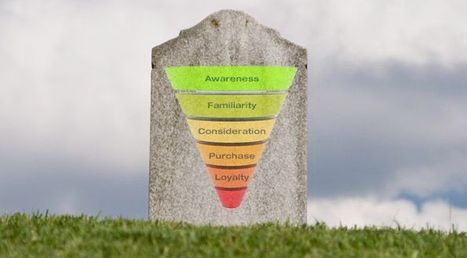








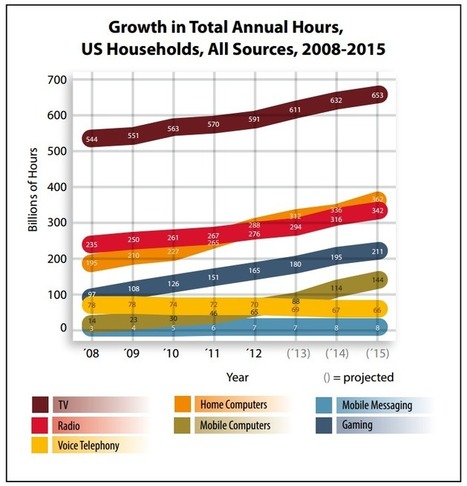

![Friend, Follow, Like, Buy – How Social Media Impacts Shopping [INFOGRAPHIC] | Public Relations & Social Marketing Insight | Scoop.it](https://img.scoop.it/qoH6F35-llJHSEn19pQwSzl72eJkfbmt4t8yenImKBVvK0kTmF0xjctABnaLJIm9)












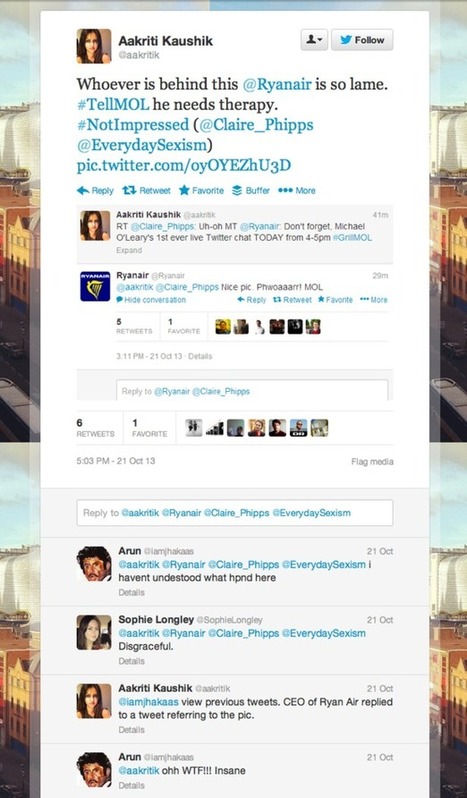

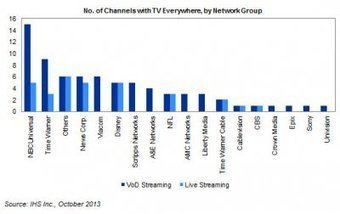
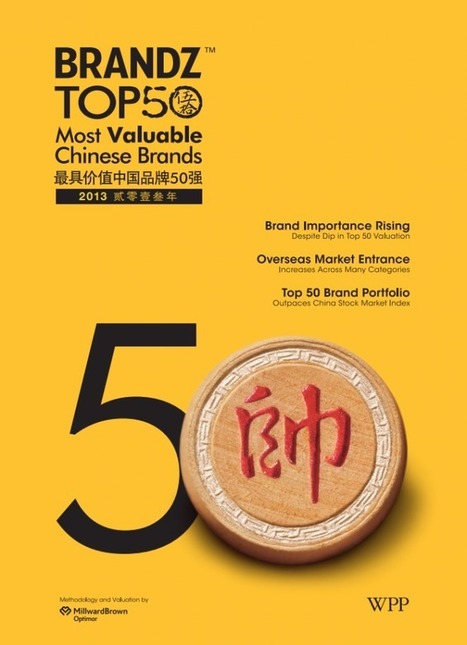







A treasure trove of marketing ideas and inspiration.